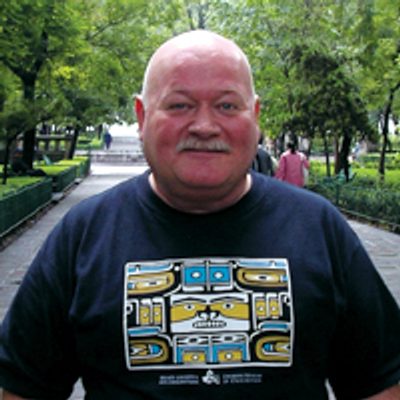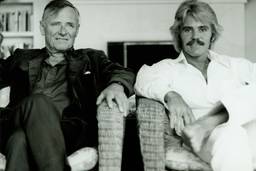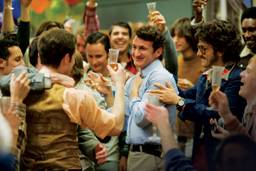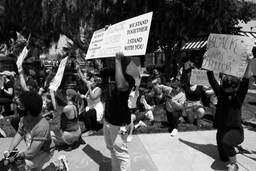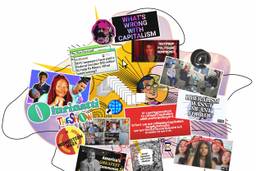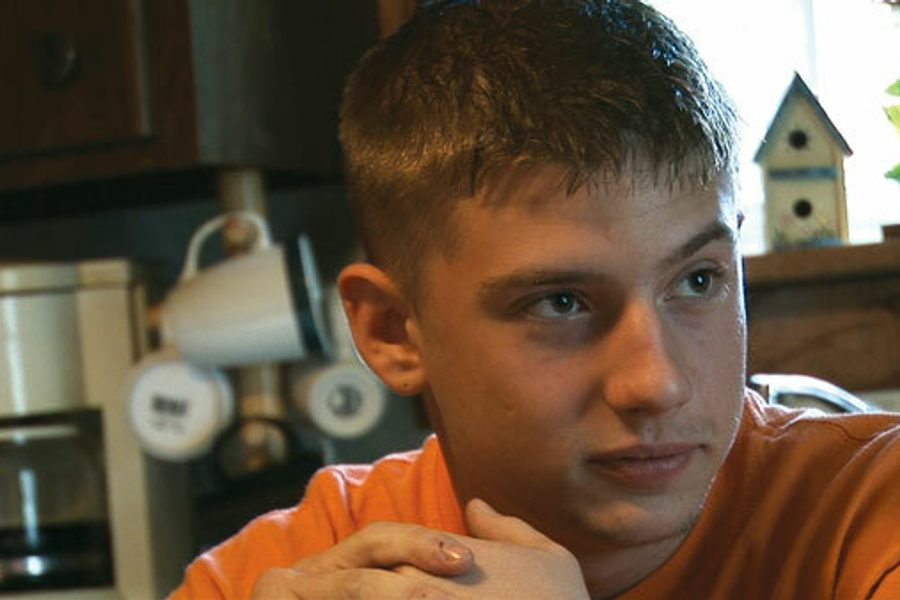
Forty years ago, the Stonewall Riots sparked a revolution in Gay, Lesbian, Bisexual and Transgender (GLBT) rights in the United States. Since then, gays and lesbians have seen laws passed across the country protecting their right to work, to associate freely and live where they want, and even, in some places, to marry. Coinciding with those transformations, gays created huge urban communities to openly celebrate their lives, with New York’s Greenwich Village, Chicago’s Boystown, San Francisco’s Castro and similar neighborhoods around the country becoming meccas of queer culture.
The progress has been remarkable, to the point that one of the primary arguments anti-gay activists use against non-discrimination laws is that gays and lesbians are no longer a disadvantaged minority. The anti-GLBT crowd relies on this argument because they are aware that in this age of gay celebrities and corporate-endorsed pride parades, it seems on the surface to be true. It is not, of course, and Out in the Silence, a new documentary by Joe Wilson and Dean Hamer, brings home that point in a complex 57-minute portrait of GLBT lives and issues in small-town America.
The film takes place in Oil City, Pa., a Rust Belt town in the rough hill country north of Pittsburgh. It is Wilson’s hometown, a place he left after high school. Although he and Hamer lived in Washington, D.C., after they got married in Canada in 2004, they decided to publish a wedding announcement in the Oil City Derrick, which led to an onslaught of negative letters to the editor in the paper.
But then Wilson received a letter from Kathy Springer, the mother of an Oil City student who had faced unrelenting harassment in the town’s high school. Her gay son, C.J. Bills, was forced to drop out and enroll in an online GED program because every school day had become, in his words, “eight hours of pure hell.” The letter spurred Wilson, accompanied by Hamer, to return to Oil City to see if there was a story to tell. There was, and then some. Out in the Silence details the ultimately successful battle of Bills and Springer, with help from the ACLU, to get the local school board to implement comprehensive diversity training. It also documents the efforts of a lesbian couple there to re-open a landmark Art Deco theater and Wilson’s own realization that stereotypes work both ways.
About as mainstream as a small-town boy can be, Bills works on old cars, tends his family’s game birds and jokes around with friends. But after he came out – not as a political statement but in a heated moment defending another harassed boy – he came face to face with anti-gay prejudice and the tacit endorsement of it by teachers who turned a blind eye. Springer, who describes herself as “just a little old back hills mom,” was incensed enough to fight for her son and other GLBT students.
At the same time, lesbian partners Roxanne Hitchcock and Linda Henderson were refurbishing the long-closed Latonia Theater. Unlike Wilson, they had stayed in Oil City and found each other. Their story, as they face down prejudice to open the Latonia and win community acceptance, is also compelling stuff, and worth a film of its own.
The most intriguing part of Out in the Silence may be Wilson’s meeting of hearts, if not minds, with Pastor Mark Micklos, a Christian minister in Oil City. The two men, with their spouses, approached each other warily, and they do not end up agreeing on GLBT issues by the film’s end. But they do become good friends and win each other’s respect and trust.
That’s a powerful thing to watch, and says much about where the fight for GLBT rights is in America today and about where it may well end. Despite the progress lesbians and gays have made since Stonewall, the movement still struggles to bring change to the thousands of small towns that make up the bulk of the country. It just isn’t enough to tell kids in those places that, if you make it through the hell of growing up gay and alone in a small town, you can escape and live in a big city paradise.
Out in the Silence points to a different future, one where GLBT folks can stay home and do small-town things like bring an old community landmark back to life, go to school board meetings and help kids grow up a little better, even sit and chat and become friends not because you share ideology, but simply because when everybody in town is your neighbor, you need to find ways to get to know each other. That’s not an easy journey, but Out in the Silence is a thoughtful film that shows “small-town” doesn’t have to mean small-minded, and in doing so offers a vision of a better world for LGBT people everywhere.

